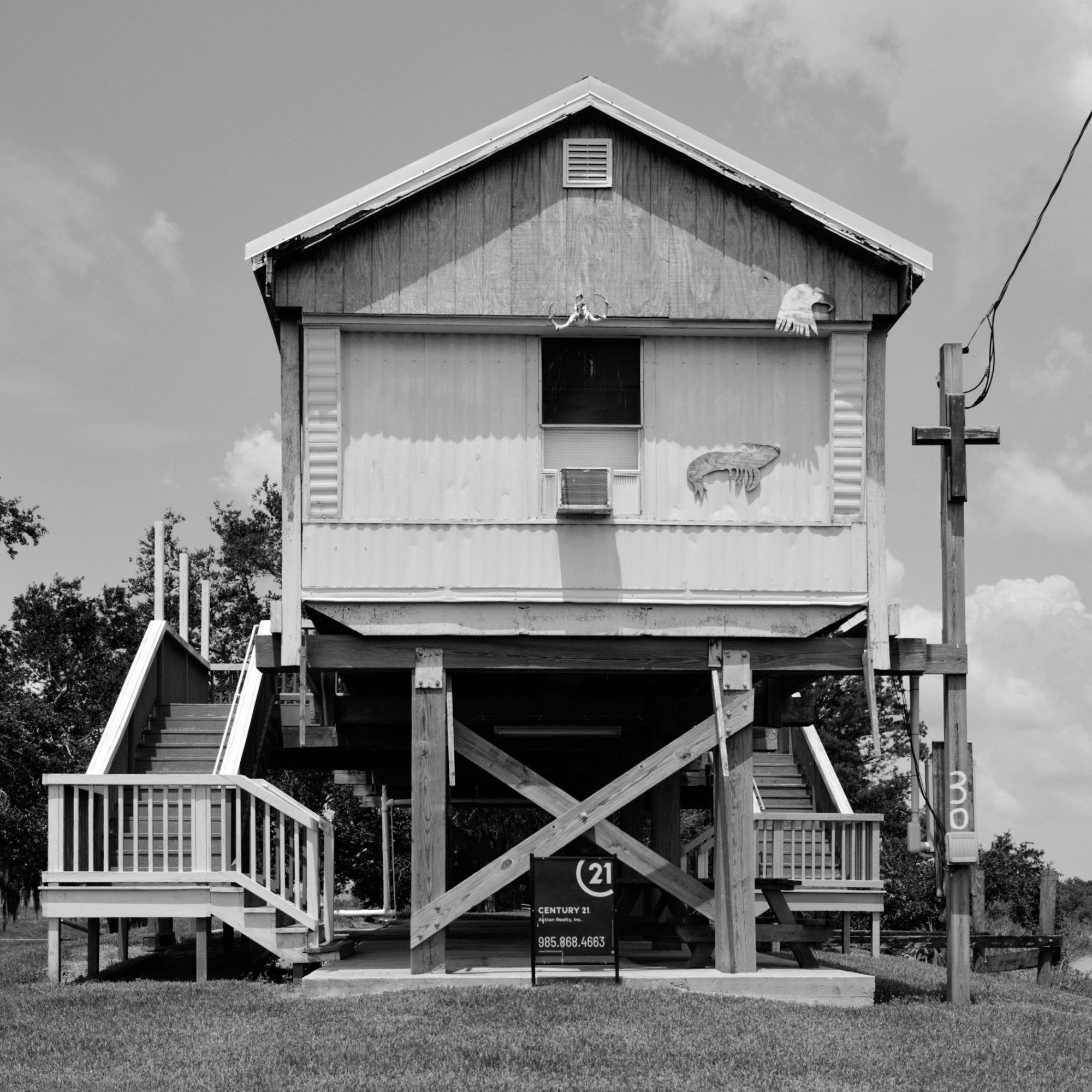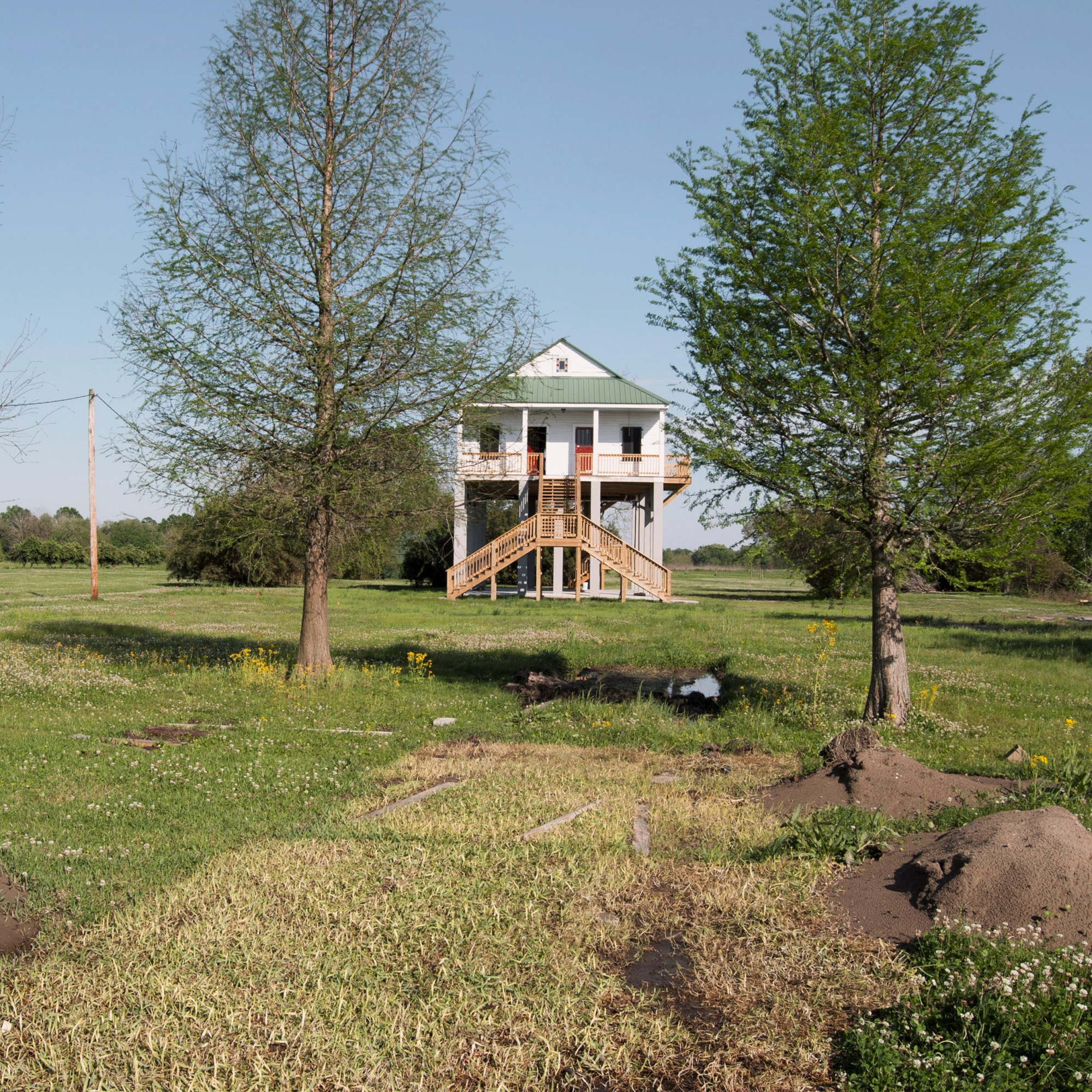
VIRGINIA HANUSIK
But some government officials and state engineers are hoping there is an alternative: elevation. The $6.8 billion Southwest Coastal Louisiana Project is betting that raising residences by an average of three to five feet and nonresidential buildings by three to six, coupled with extensive work to restore coastal boundary lands, will keep Louisianans in their communities and a local economy that helps power the country’s oil industry running. The project, a collaboration between the US Army Corps of Engineers and the Louisiana Coastal Protection and Restoration Authority (CPRA), is focused on roughly 4,700 square miles of land inthree parishes in the southwestern corner of the state: Cameron, Vermilion, and Calcasieu, where Lake Charles is the parish seat. More than 3,000 homes have been identified as being at risk of imminent flooding, and therefore as candidates for elevation funding.
Ultimately, it’s something of a last-ditch effort to preserve this slice of coastline, even as some locals pick up and move inland and as formal plans for managed retreat—or government funding for community relocation—become more popular in climate-vulnerable areas across the country and the rest of the world.
Since 1932, Louisiana has lost some 1.2 million acres of coast to erosion—an area nearly twice the size of Rhode Island.
Now, after eight years of surveys, paperwork, and waiting for cash, the pilot phase of the project is finally moving forward and raising 21 homes. As it does so, project staff and locals alike will be forced to grapple with a looming existential question: Can a region facing some of the nation’s most alarming climate predictions build its way out of an accelerating crisis?
Darrel Broussard, the project’s senior manager, sees its work as the region’s best chance at reducing damage over the next 50 years and safeguarding the roots residents have put down over generations. “This is Louisiana. This is where everyone lives. This is where we work. This is where the economy comes from,” he says. “There are models out there trying to predict the future. They’re just models. Right now, we currently have communities, neighbors, all living there.”
At the same time, some environmental experts worry that this may be too rosy an outlook, with time and nature conspiring against lasting success. “The sooner we can shift our mindset towards managed retreat, the better,” says Torbjörn Törnqvist, a geology professor at Tulane University. “This is a very tough issue. This is a part of the country that’s just going to disappear.”
It didn’t take long for the Bells to feel at home in Lake Charles, the biggest city in what Louisiana officials call the state’s “working coastline.” The economy here thrives on commercial fishing and agriculture, though petroleum services have long been at its heart; roughly 30% of Louisiana’s refining capacity is based in the region, and the state accounts for nearly one-sixth of the country’s refining capacity, according to the US Energy Information Administration.
But what appealed most to Christa Bell, a public relations professor at McNeese State University, was locals’ hospitality and cuisine—proud reflections of Louisiana’s friendly charm. She loved the warm aesthetic of historic Ryan Street’s red brick buildings, which stand in stark contrast to the city’s casinos and refineries and its single skyscraper, the former Capital One Tower.

VIRGINIA HANUSIK
The building has sat vacant since a hurricane damaged it nearly four years ago—and over that time it has become a symbol of the strain created by severe weather in an area where waterways flow like veins and where flooding occurs often.
